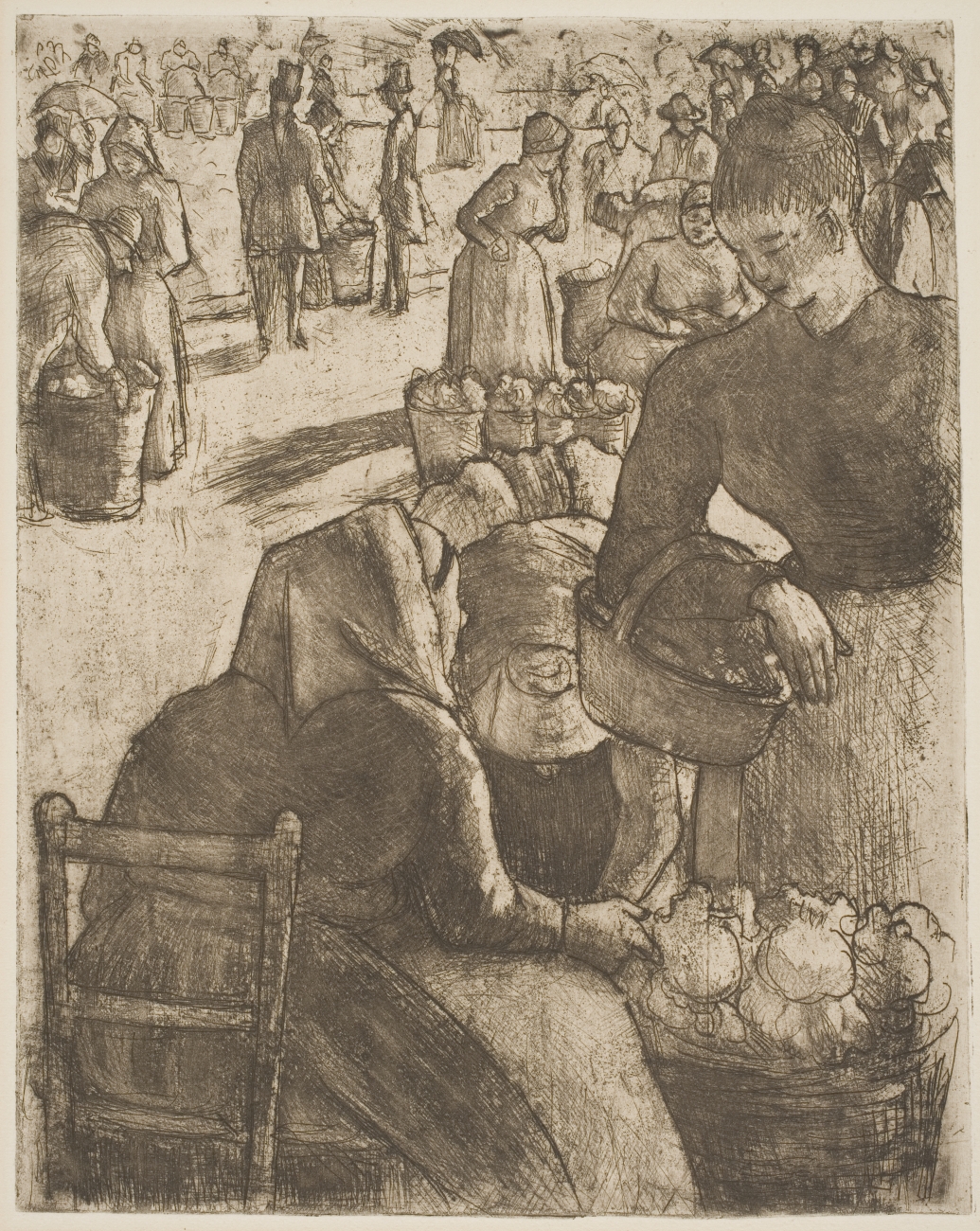Marché aux Legumes, à Pontoise

Camille Pissarro (b. 1830, Charlotte Amalie, United States Virgin Islands—d. 1903, Paris, France)
Marché aux Legumes, à Pontoise, 1891
Etching with sugar lift, sheet: 12 13/16 in. x 9 15/16 in. (32.5 cm x 25.2 cm)
Gift of Mrs. Toivo Laminan (Margaret Chamberlin, Class of 1929)
1960.11
Often considered the father of the Impressionist movement, Camille Pissarro was born on the Danish West Indies island of St. Thomas in 1830, and was sent at the age of twelve to France, where he attended boarding school and came to admire French art. Though he initially pursued a career in business, at the age of twenty-one Pissarro was inspired by Fritz Melbye—a Danish artist and resident of St. Thomas—to take on painting as a full-time profession. In 1852, Pissarro traveled to Venezuela, capturing images of village scenes in Caracas and La Guaira. After returning to Paris two years later, he worked closely with Camille Corot, an artist celebrated for painting landscapes in the Neoclassical tradition.
Even though Pissarro initially focused on producing images that conformed to the conventional, academic style favored by the Paris Salon, he soon turned towards the depiction of the reality of rural life in the French countryside. His shift towards painting outdoors influenced other artists to reject the traditional styles taught at the École des Beaux-Arts, and paved the way for Impressionism. Yet while other major artists of the Impressionist movement would go on to paint urban scenes, Pissarro continued to concentrate on traditional villages, fields, and market gardens, which largely ignored machines and modern activity.
Marché aux Legumes, à Pontoise illustrates the type of rural life that Pissarro admired. In this etching, the artist depicts a market scene. In the foreground, a female vendor sits in a wooden chair with her back to the viewer. On the right, a second woman stands, holding a basket on her right arm and glancing down at the produce being sold. In the background, Pissarro illustrates a crowd of villagers browsing the market streets; their outlines are less detailed than the central figures.
For Pissarro, printmaking was a crucial aspect of his career: “I find this work as interesting as painting, which everybody does, and there are so few who achieve something in printmaking.” He often experimented with new etching techniques, such as the sugar lift process used to make this print. Pissarro would have painted a solution with sugar onto the surface of his plate prior to coating it in a liquid etching ground. After placing the plate in hot water, the sugar would have dissolved and lifted off, leaving the image to be printed.
Hannah Augst ‘17
Curatorial Summer Intern 2015, Davis Museum